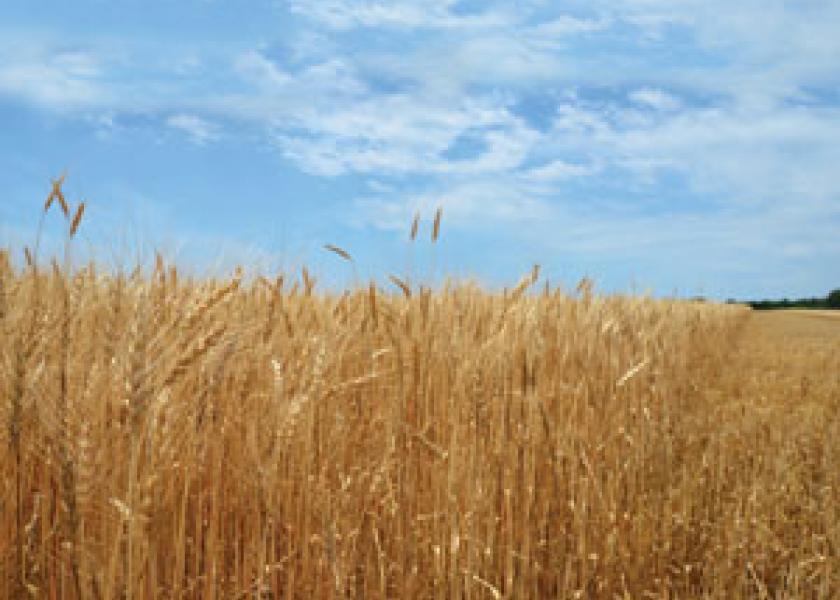Drought Makes Wheat Attractive for Feed

USDA projects the feeding of wheat will account for 12.7% of total use of U.S. wheat during 2012, up from the 9.1% average.
Issued by Carl Zulauf and Nick Rettig, The Ohio State University
In its October World Agricultural Supply and Demand Estimates, USDA increased the estimated feeding of wheat during the current 2012/13 wheat crop year by 95 million bushels to 315 million bushels.
This change was prompted by the September 1 stocks report and suggests that increased feeding of wheat will join increased imports and reduced consumption as market responses to the drought-reduced 2012 corn and soybean crops. Therefore, this article examines the historic role of wheat feeding in the U.S. and the factors associated with it.
Wheat Feeding as a Share of Total Wheat Use
USDA currently projects that the feeding of wheat will account for 12.7% of total projected use of U.S. wheat during the 2012 wheat crop year. This exceeds the average share of 9.1% and is the highest share since the 2000 wheat crop year.
Wheat feeding has ranged from 16 million bushels or a 0.7% share in the 2007 wheat crop year to 484 million bushels or a 19.9% share in the 1990 wheat crop year. No linear trend exists over time in the share of wheat that is fed. Historically, wheat feeding is usually concentrated in the first quarter of the wheat crop year, or June through August.
In fact, between the 1974 and 2011 crop years, USDA reports that 15% more wheat was fed during the first quarter than was fed for the entire year. While not possible if the use category was only feeding, this data reporting relationship serves as a reminder of the important role residual use plays in this use category.
Wheat Feeding Decision
The decision to use any grain, including wheat, in feeding livestock is a complex management decision. Energy and nutritional needs in a balanced feed ration are specific to both the animal species and the type of animal within a species.
Moreover, changing the mix of wheat in a ration during a feeding cycle can materially reduce feeding efficiency. Hence, livestock feeders want to be relatively certain that not only is wheat a cheaper source of feed now but will remain so throughout the feeding cycle.
In other words, the decision to feed wheat is more of a longer-term strategic decision than a short-term tactical decision. This may partially explain why the share of wheat that is fed is positively and statistically significantly correlated in adjoining years: +0.42. Thus, high wheat feeding in one year is likely to be followed by high wheat feeding next year.
Given the important constraint on rations, economics suggest that the feeding of wheat should be related to:
(1) the competitiveness of wheat as a feed ingredient relative to the major feed grain, corn
(2) the profitability of producing livestock and livestock products.
Wheat Feeding Observations and Implications
- Feeding of wheat during the current 2012 wheat crop year is likely to be a larger share of the total use of U.S. wheat than in recent years.
- Increased feeding of wheat reflects a price of wheat that is near its post-1973 lows relative to the price of corn.
- On the other hand, the low profitability of producing livestock and livestock products is a drag on the feeding of wheat.
- The low profitability of producing livestock and livestock product suggests that the price ratio of wheat to corn will likely have to stay near its post-1973 lows if wheat feeding is to remain an important adjustment mechanism to the drought reduced crops of corn and soybeans.
- While entirely speculative, it is possible that the drought of 2012 might mark the beginning of an extended period of above average feeding of wheat. More broadly, increased feeding of wheat in the U.S. could be one of the market responses to the increased use of corn in biofuels
Read the entire article: Wheat Feeding







